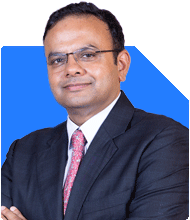Ramalingam Kalirajan |10902 Answers |Ask -Follow
Mutual Funds, Financial Planning Expert - Answered on May 10, 2024
He has an MBA in finance from the University of Madras and is a certified financial planner.
He is the director and chief financial planner at Holistic Investment, a Chennai-based firm that offers financial planning and wealth management advice.... more

Sir/Madam I'm 35 Years Old Salaried person I'm currently Investing Rs.30,000/- in Mutual Fund from 2017 Portfolio Value Is Rs.21,00,000/- and My Investment is 12,80,000/- Want To Continue For 10 Years.. 10% step-up in every 2 Years 1.SBI SMALL CAP 2.PARAG PAREKH FLEXI CAP 3.NIPPON SMALL CAP 4. DSP MID CAP 5.SBI INTERNATIONAL FUND 6.MOTILAL OSWAL TAX SAVING 7.AXIS NEXT 50 INDEX FUND
Let's review your current portfolio and make some suggestions:
1. SBI Small Cap, Nippon Small Cap, DSP Mid Cap: Small and mid-cap funds have the potential for high growth but come with higher volatility. Since you're looking at a long-term horizon, these can be suitable for wealth accumulation. However, monitor their performance closely and be prepared for fluctuations.
2. Parag Parikh Flexi Cap, SBI International Fund, Motilal Oswal Tax Saving: These funds offer diversification across market caps and geographies, which is beneficial for risk management. Parag Parikh Flexi Cap, in particular, follows a flexible approach and invests in a mix of equity, debt, and international stocks, providing stability.
3. Axis Next 50 Index Fund: Index funds offer low-cost exposure to a basket of stocks mirroring a particular index. While they provide diversification, they may lack the potential for outperformance compared to actively managed funds. However, they can be a valuable addition to your portfolio for passive investing.
Considering your investment horizon and the step-up strategy, you can continue investing in these funds with periodic reviews. It's essential to rebalance your portfolio periodically to ensure alignment with your goals and risk tolerance.
Given the significant portfolio value, it's advisable to seek advice from a Certified Financial Planner who can provide personalized guidance tailored to your financial objectives, risk appetite, and tax considerations.
Keep up the good work of systematic investing, and with a well-diversified portfolio, you're on track to achieve your long-term financial goals.
Best Regards,
K. Ramalingam, MBA, CFP,
Chief Financial Planner,
www.holisticinvestment.in
You may like to see similar questions and answers below
Abhishek Dev | Answer |Ask -Follow
Financial Planner - Answered on Aug 16, 2023
Ramalingam Kalirajan |10902 Answers |Ask -Follow
Mutual Funds, Financial Planning Expert - Answered on Apr 12, 2024
Ramalingam Kalirajan |10902 Answers |Ask -Follow
Mutual Funds, Financial Planning Expert - Answered on May 06, 2024
Ramalingam Kalirajan |10902 Answers |Ask -Follow
Mutual Funds, Financial Planning Expert - Answered on May 10, 2024
Samraat Jadhav |2514 Answers |Ask -Follow
Stock Market Expert - Answered on Dec 18, 2025
Reetika Sharma |432 Answers |Ask -Follow
Financial Planner, MF and Insurance Expert - Answered on Dec 18, 2025
Reetika Sharma |432 Answers |Ask -Follow
Financial Planner, MF and Insurance Expert - Answered on Dec 18, 2025
Reetika Sharma |432 Answers |Ask -Follow
Financial Planner, MF and Insurance Expert - Answered on Dec 18, 2025
Samraat Jadhav |2514 Answers |Ask -Follow
Stock Market Expert - Answered on Dec 18, 2025

Kanchan Rai |648 Answers |Ask -Follow
Relationships Expert, Mind Coach - Answered on Dec 18, 2025
Kanchan Rai |648 Answers |Ask -Follow
Relationships Expert, Mind Coach - Answered on Dec 18, 2025
Anu Krishna |1754 Answers |Ask -Follow
Relationships Expert, Mind Coach - Answered on Dec 18, 2025
Anu Krishna |1754 Answers |Ask -Follow
Relationships Expert, Mind Coach - Answered on Dec 18, 2025
Anu Krishna |1754 Answers |Ask -Follow
Relationships Expert, Mind Coach - Answered on Dec 18, 2025

























